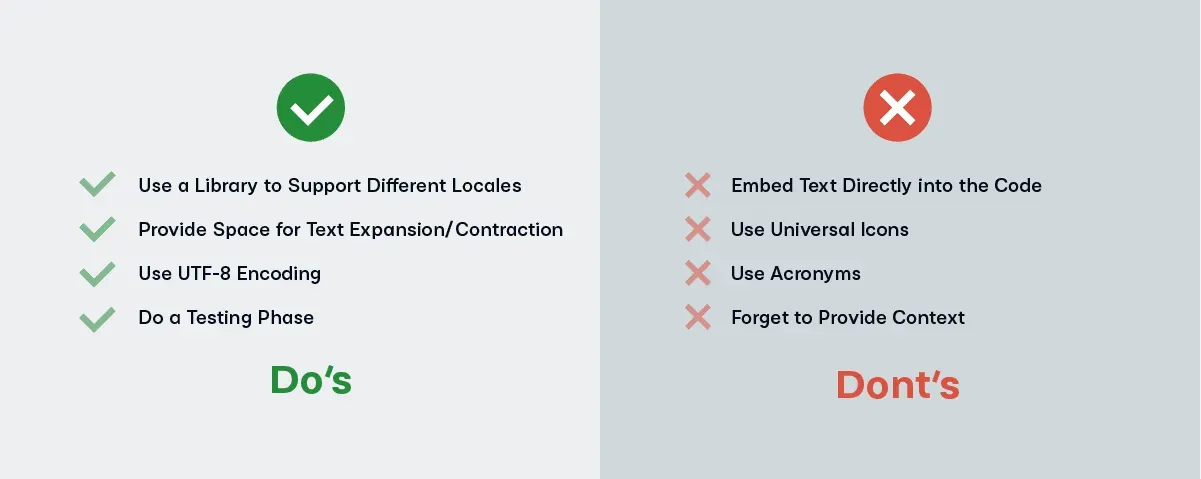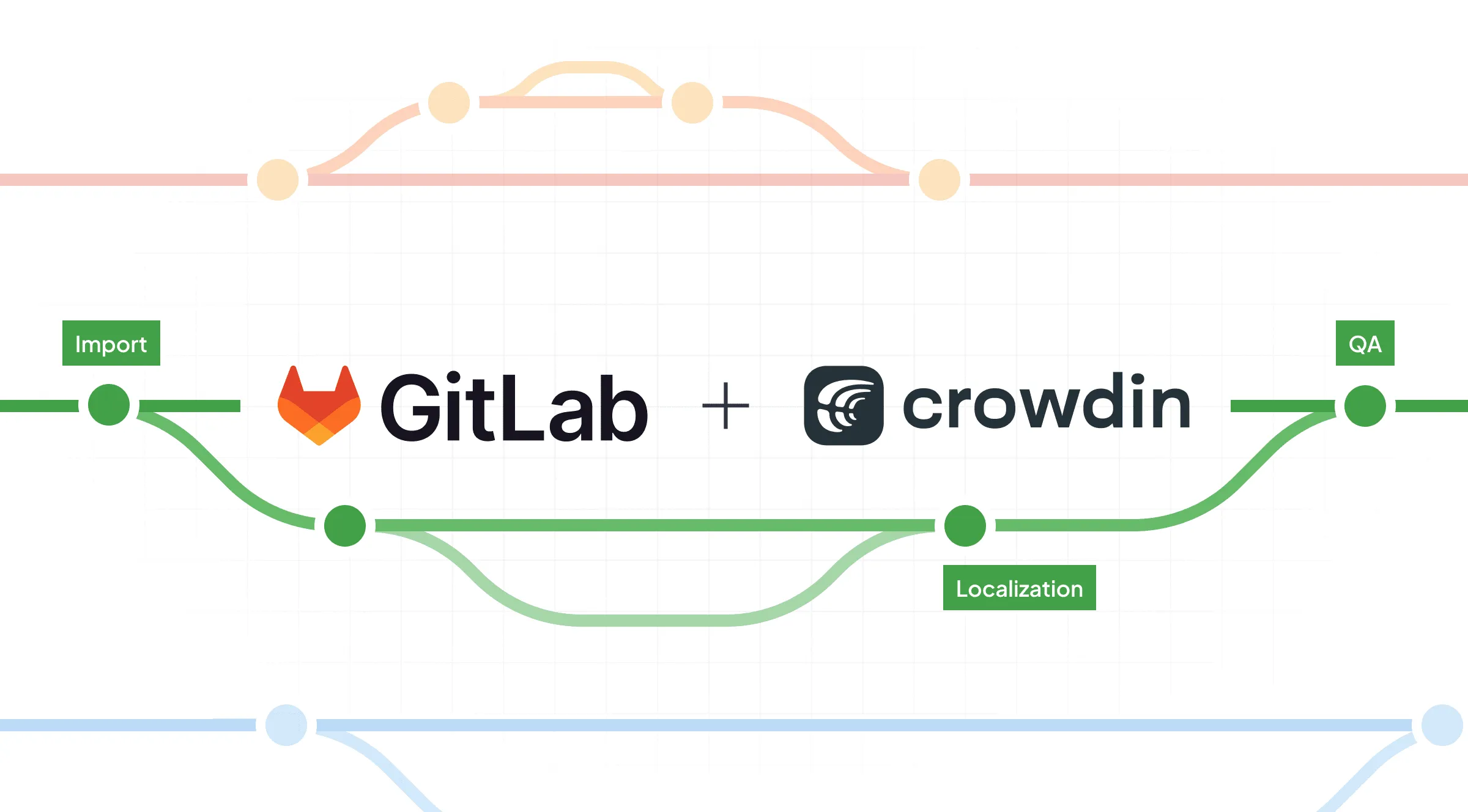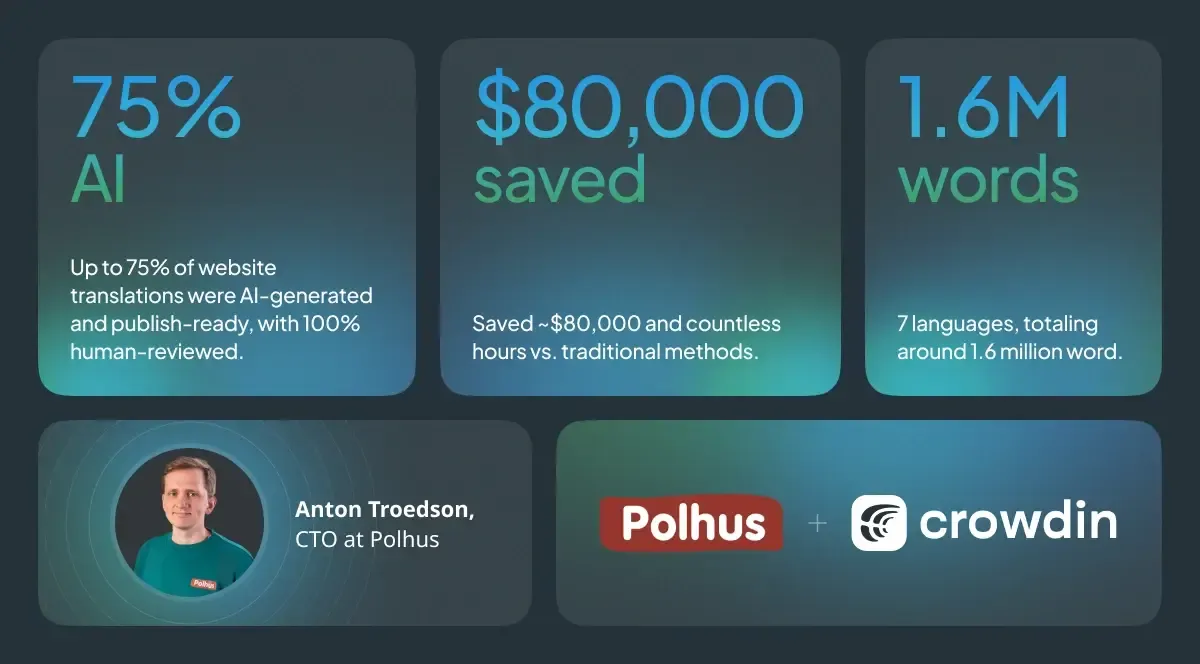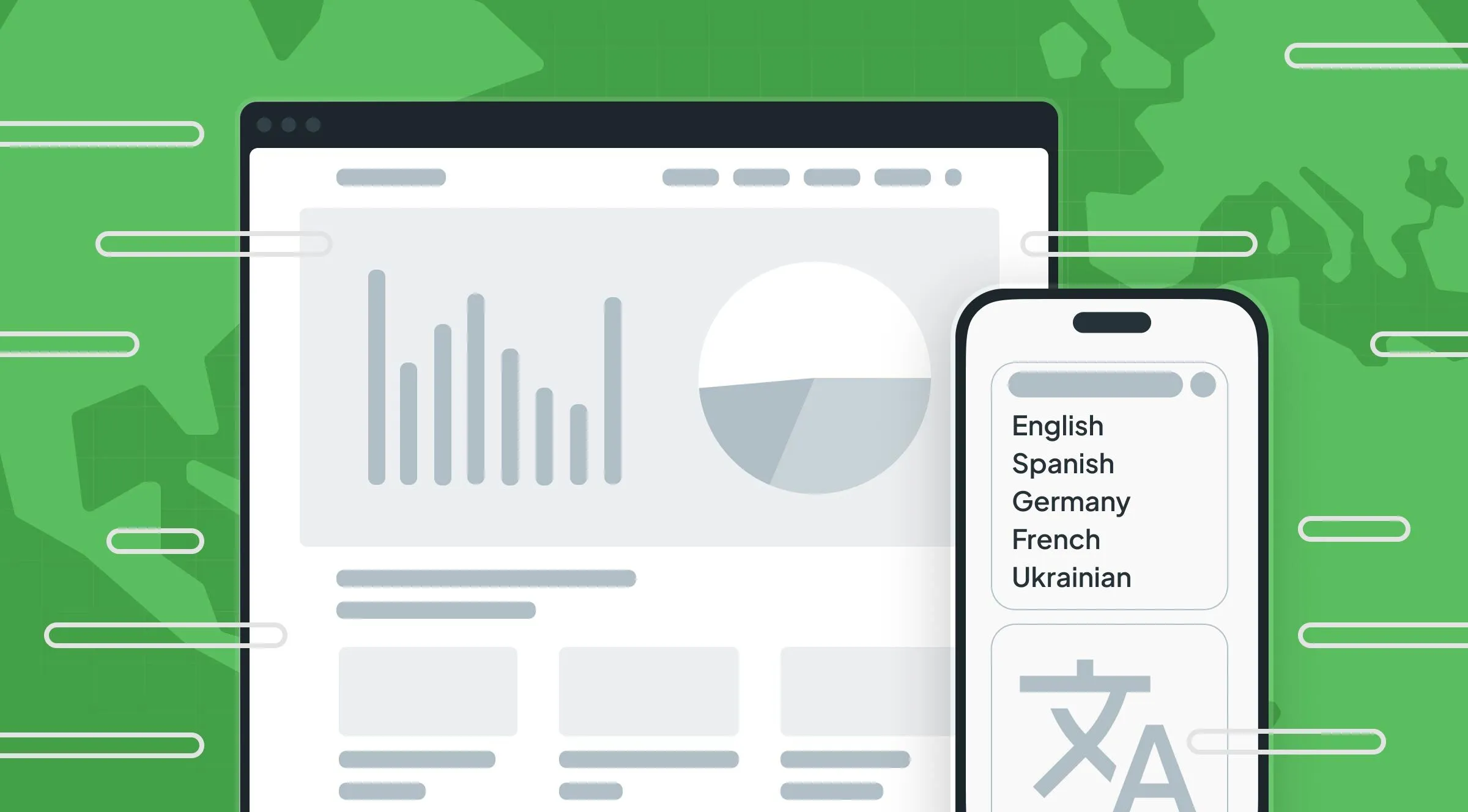Do you want your software product to be used all over the world in multiple languages? If your answer is yes, it’s time to think about localization (l10n). This guide covers everything you need to know about how to localize software: what is software localization, its process, best practices, and how it can support your app’s efficient expansion and delivery around the globe (based on real-world examples).
In this guide, you’ll learn:
- The modern approach: understand the difference between outdated “waterfall” methods and the agile, continuous localization workflow.
- A 5-Step Plan: we’ll walk you through the entire software localization process, from connecting your code repository to managing translation content and final quality testing.
- The tools to use: learn how a localization platform like Crowdin automates the entire workflow and integrates with the tools you already use, like GitHub and Figma.
What is Software Localization?
Software localization goes far beyond simple translation: This process typically requires not only switching to multiple languages but modifications to the user interface. Including all images, text, and multimedia, to make the software feel truly native to local users. Along with this, localization can include modification of the cultural and country-specific aspects like:
- Hand symbols, gestures, and iconography
- Culturally appropriate images
- Dates, times and currency formats
- Spelling and phrasing in different dialects
- Right-to-left language adjustments
When done right, localization adapts the software in linguistic, cultural, and practical terms to the point that the new audience feels like the software they use was initially created for their country.
4 Benefits to Localize Your Software
Businesses that don’t include localization in their strategy risk not becoming global, ever. That’s why many start-ups emerged in the 21st century, during the age of globalization, to understand the need for product localization. It’s the way you can reach a variety of markets, expand your client base and, as a result, grow the revenue.
People often talk about English as a global language. But, when we are talking about products and software, focusing only on English-speaking markets neglects a large chunk of the world population.
There are approximately 7.9 billion people worldwide, and 1.5 billion people speak English. However, only about 360 million speak English as their first language, meaning most English-speaking world is more comfortable working with other languages.
Even in single-language countries, many potential customers may speak multiple languages. If your target market is multilingual, some may be more comfortable with one language over the other. Let’s take the example of the USA. While its most population speaks English and Spanish, many additional languages are spoken across the country too. The list includes Mandarin, Cantonese, Vietnamese, German, French, Arabic, and more.
Here are the reasons why software localization is important for international businesses and what are the benefits of having localized software.
1. Reach new markets quicker
According to the Journal of Digital Marketing and Communication, localization makes your content and marketing messages more appealing to new audiences. Thus, localizing your software helps you gain new customers and their trust. As a result, your users are more likely to spread the word about the product.
With localization incorporated into your software development process, you’ll be ready to deploy to several markets once your product is ready. At the same time, it’s a much more expensive and time-consuming process to localize software after the development. We’ll cover more about the differences in these approaches later in this article.
2. Expand your customer base
Localization ensures your customers enjoy your product and share their experiences with others. If your customers can understand your product easily, what it is, what it does, and why it’s the right choice for their needs, they’ll naturally be more willing to buy and recommend it.
3. Improve the user experience and brand visibility
Localization is what can improve your brand development and loyalty, as it’s one of the ways to deliver a personalized experience to your customers. No big surprise, people love personalization and prefer to stick to brands they love, even if there’s a cheaper alternative. While the alternative could offer similar features, the overall customer experience of the chosen brand is what keeps them coming back.
Moreover, people often look at average ratings and user reviews before choosing between competing products. Localized user experience will help you stand out from the rest.
4. Grow your revenue
Product localization can lead to improved sales numbers in the region your business targets. Many people prefer buying locally rather than globally. By using region-specific keywords, phrases, and language, you can get more traffic to your website and other marketing materials. As a result, you receive more conversions and leads.
2 Main Approaches to Software Localization
As in business strategies, there are different types of approaches to localization. In this part, we’ll describe the waterfall approach vs continuous localization.
Waterfall localization
Waterfall localization is the old-fashioned way people dealt with localization when there were no localization management platforms. In this approach, the localization is implemented at the very end of the software development cycle. To receive a final localized product, software development teams need to hand over corresponding source files to the localization team after the product is finished. Thus, the final new version could be released once a year or a half.
The main job is to translate the product and support documentation. There is no collaboration between the localization team, the product development team, marketers, and other departments. Due to this, there are a lot of misunderstandings. The localization team needs additional context and clarification. It’s difficult to obtain them and manage the work process with the described approach.
Besides being time-consuming, this approach includes the risks of high costs to fix localization errors and bugs and poor UX or broken design. And the “cherry on the top”, once the translated text is completed, the software strings are manually uploaded back into the software for merging and publishing.
Localization after development is no longer an option. Development time has shortened, and translation time should too. The waterfall localization approach is not adapted for this.
Continuous localization
You need another solution – continuous localization. The main objective of this approach is to automate tasks (often using AI localization tools) that require manual intervention or involvement from developers, automate content delivery to translators, and provide quicker release cycles.
Continuous localization syncs the localization process with the development process so that they are both running in parallel. New and modified strings are automatically detected by the localization software and delivered whenever they are ready for merging and publishing. It gives you more efficiency and flexibility when it comes to your localization workflow.
Find out what benefits each team can receive from continuous localization in our free e-book that includes our own experience, thoughts about this approach for each department and the opinions of more than 10 experts from the localization sphere.
Localize Your Software with Crowdin
How to Localize Software: 5 Easy Steps
To put it in simple words, continuous localization of software is a never-ending working cycle with the following key steps:
1. Resource file extraction or repo connection
You’ll need to extract your resource files in one of the formats supported by the localization platform and then upload them to begin the translation process. To minimize the manual work, you can install an integration with GitHub, GitLab, Bitbucket, or Azure Repos. With its help, you can synchronize source and translation files between your repository and translation project in Crowdin. All translated and approved files will be automatically pushed as a pull request to the l10n branch in the repo.
2. Translation and management
Managers define the project scope and can enable machine engines or translation memory (TM) pre-translation, and assign tasks to linguists for translation. With more than 600 apps available on Crowdin Store, you can sync content with code repositories, CMS, and design tools, like Figma or Sketch.
In Crowdin, translators can work from the Editor. Online Editor is designed to bring together all the information translation teams might need while working on the content. MT (machine translation) and TM engine suggestions, comments, search, filters, context, file preview, and terminology. Everything is in one place. Along with the regular features, you can install apps from the Store and extend the Crowdin Editor even more.
3. Proofreading and quality review
Translation proofreading is typically one of the last stages of the translation process. As soon as the translation is completed, a proofreader can review the text and spot and correct any mistakes. To make things easier, you can enable Quality Assurance checks that help you deliver accurate, clear, and error-free translations.
4. Insertion into code
Once you’re happy with the quality and accuracy of your translations, it’s time to insert your localized strings back into your code. You can pull them from the localization platform, then import and deploy them or, as mentioned above, use integration with your repo to decrease manual actions.
5. Localization testing
What is localization testing? Usually, it’s the final step when the localized software is tested for a specific region, locale, or culture. The purpose of doing localization testing for software is to test appropriate linguistic and cultural aspects for a particular locale and its users.
The major product area affected by localization testing includes content and UI.
During the process, you need to pay attention to the aspects like:
- Product UI
- Default language per location
- Currency, date, and time formats
- Design and visuals per the targeted country or region
Best Practices
You can’t be too careful when it comes to your product representation. If you don’t want to spend months fixing localization bugs, make sure you consider these common issues and follow our advice.

Case Studies: Success Stories
1. GitLab
GitLab has integrated Crowdin into its development workflow to enable continuous localization. This approach allowed them to synchronize content between their development platform and Crowdin, which ensured that localization kept pace with their agile development cycles. The decision contributed to making their product more accessible to the world by translating it into 78 languages. This case study proves the importance of localization software integration into the software development lifecycle for faster and more efficient product releases–link to the case study.

2. Pipedrive
Pipedrive manages 24 languages and 2.7 million words a year, with over 400 developers that contribute to content every day. The company integrated localization software into their workflow. Which resulted in simple collaboration between their developers and localization teams, making the localization process smoother than it has ever been–link to the case study.

3. Polhus
Polhus used localization software (including Crowdin’s AI and DatoCMS integration) to localize their website. They automated 75% of translations for 1.6 million words across 7 languages, saved approximately $80,000 and significantly reduced manual effort–link to the case study.

Software Localization Tool: Crowdin
Localization software, such as Crowdin, is a tool that helps businesses adapt their digital products (like websites, apps, or software) to specific languages, regions, and cultures. This software often includes functions like:
- Shared cloud-based workstation for every team involved.
- The company’s present systems can be connected via software development kits or APIs.
- Code strings can be automatically loaded into and exported from code repositories.
- Proofreading.
- Localization statistics.
- Terminology glossary.
- Translation memory and machine translation.
- Quality assurance checks.
- UI strings can have visual references like screenshots (in-context translation).
If you’re searching for a tool to localize your software/application, Crowdin is a solution for you! It is famous for its high-end developer-friendly software localization:
Learn more:
- Book a free demo with one of our specialists and get answers to all of your questions to make your localization path more smooth.
- Watch a recorded on-demand demo to learn the main features of the platform.
Localize your product with Crowdin
What are the three types of localization?
Three main types of localization are cultural, linguistic, and technical. Linguistic localization is about content translation with meaning and context preservation. Cultural localization adapts imagery, colours, and references to match local customs, traditions and preferences. Technical localization changes formats for dates, currencies, and measurements, ensuring all content is compatible with local technical standards and regulations.
How to find the best software localization solution?
- Define your project requirements, including language pairs and content volume.
- Prioritize features that are crucial to have in your case, like translation memory, workflow automation, or integration capabilities.
- Request demos to check user experience and support quality.
- Compare pricing structures.
- Read clients’ reviews from companies similar to yours.
Diana Voroniak
Diana Voroniak has been in the localization industry for over 4 years and currently leads a marketing team at Crowdin. She brings a unique perspective to the localization with her background as a translator. Her professional focus is on driving strategic growth through content, SEO, partnerships, and international events. She celebrates milestones, redesigns platforms, and spoils her dog and cat.
